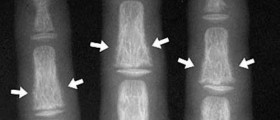
Dialysis is a treatment of option for patients in terminal stage of renal failure. It helps in cleaning of the body from toxic substances and actually replaces the regular function of once healthy kidneys. The process is done via semipermeable membrane. Hemodialysis and peritoneal dialysis are the two types of dialysis that exists. In the first one the blood is cleaned in special external filter. It is called dialyzer. In case of peritoneal dialysis the peritoneum represents the semipermeable membrane.
As dialysis represents artificial way of blood cleaning and it is invasive process it needs to be carried out under sterile conditions. There are several possible complications of the dialysis. Still even they can be evaded if the whole process is performed under prescribed conditions.
The blood pressure may decrease. This is one of the most common complications of the dialysis. Hypotension happens because the increase of the osmotic pressure. To keep the pressure under control one must be administered enough fluid during dialysis. In case that hypotension occurs a patient needs to be placed in so called trendelenburg position so that heart can be supplied with enough amounts of blood. For all those who have been undergoing the process for a long time there is increased chance of arrhythmias. The disturbance in heart's rhythm may occur during dialysis or between two dialysis. The main cause of this disorder is imbalance of electrolytes or changes in acid-base homeostasis.
Muscular spasms are one more possible complication of dialysis. They result as a consequence of removal of increased volume of fluid. The best way to treat spasms is to administer a small bolluse of isotonic saline. There is one possible preventive method and it includes usage of quinine sulfate two hours before the dialysis.
Increased body temperature is not common for dialysis. This symptom may point to infection and the temperature must be monitored during the process. Antipyretics are administered and the underlying cause is searched for.
Red blood cells are more prone to destruction in patients who are on dialysis. Hemolysis or breakdown of the red blood cells is caused by toxic and biochemical effects of dialysis onto the red blood cells.
Thrombosis may be one more possible complication of dialysis. It can happen due to the usage of subclavian catheters as vascular access.
Patients who are suffering from terminal stage of renal failure are prone to reduce the levels of oxygen. Hypoxemia affects almost 90% of all patients who are on a dialysis.

















Your thoughts on this
Loading...